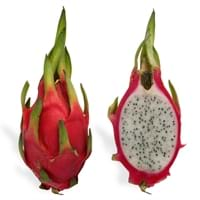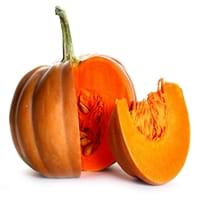Health Benefits
Anti-oxidant properties, Anti-aging benefits, Maintains healthy cholesterol level, Weight loss properties
Arthritis treatment, Cancer prevention, High Cholesterol Regulation, Lower blood pressure, Helps Prevent cataract, Prevents gall stones, Ulcer treatment, Weight loss properties
General Benefits
Helps in weight loss, Suppresses Arthritis
Boosts respiratory health, Eliminate parasites and infections, Protects against birth defects, Strengthens bones
Skin Benefits
Anti-aging benefits, Heals sunburn, Treatment of acne
Heals sunburn, Hydrates skin, Skin rejuvenation
Hair Benefits
Treatment of colored hair
Regulates hair growth
Allergy Symptoms
NA
Abdominal cramps, Anaphylaxis, Digestive Problems, Dizziness, Eczema, Fainting, Hives, Inflammation, Itching, Tingling sensation in wrist and face, Vomiting, Wheezing
Side Effects
NA
Kidney and gallbladder diseases
Lactating Women
Not Available
Yes
Best Time to Eat
Any time except an hour after meal, Don't consume at night and before bed
Along with meal, Don't eat after meal, Morning time (before lunch)
Vitamin A (Retinol)
Not Available
Vitamin B5 (Pantothenic Acid)
Not Available
Vitamin B6 (Pyridoxin)
Not Available
Vitamin B9 (Folic acid)
Not Available
Vitamin C (Ascorbic Acid)
Vitamin E (Tocopherole)
Not Available
Vitamin K (Phyllochinone)
Not Available
Lutein+Zeaxanthin
Not Available
Phytosterol
Not Available
Calories in Fresh Fruit with Peel
Calories in Fresh Fruit without Peel
Not Available
Calories in Frozen Form
Not Available
Not Available
Calories in Dried Form
Not Available
Not Available
Calories in Canned Form
Not Available
Calories in Pie
Not Available
Type
Berry, Citrus, Fruit vegetable, Melon, Tree fruit, Tropical
Berry
Season
Early fall, Summer
All seasons
Varieties
Selenicereus megalanthus and Hylocereus polyrhizus
Jarrahdale, Peanut, Lakota, Cow, Sugar, Caribean, Red kuri, Buttercup and Pink lady
Color
Magenta, Pink
Blue, Green, Orange, Red, White
Inside Color
White
Creamy Yellow
Taste
Bland
Creamy, Soft, Sweet
Origin
Central America, Mexico
Mexico
Soil Type
NA
Clay loam, Sandy loam, Well-drained
Climatic Conditions
NA
Warm to hot climate
Facts about
NA
- The name pumpkin has its roots in the Greek word ‘pepon’, meaning ‘large melon’.
- The largest pumpkin ever grown weighed 1,140 pounds.
- Pumpkins were once known for removing freckles & curing snake bites.
Other Countries
NA
Egypt, India, Indonesia, Iran, Italy, Mexico, Russia, Spain, United States of America
Top Importer
China
United States of America
Top Exporter
Vietnam
China
Botanical Name
Hylocereus undatus
Cucurbita maxima
Synonym
Pitaya, Red Pitahaya, Night blooming Cereus, Strawberry Pear, Belle of the Night, Conderella plant
Cucurbita pepo, Squash
Subkingdom
Tracheobionta
Tracheobionta
Division
NA
Magnoliophyta
Class
Not Available
Magnoliopsida
Subclass
Liliidae
Dillenhidae
Order
Caryophyllales
Cucurbitales
Family
Cactaceae
Cucurbitaceae
Genus
Hylocereus
Cucurbita
Species
H. undatus
Cucurbita mixta
Generic Group
Cactus
Not Available
Difference Between Dragonfruit and Pumpkin
We might think that Dragonfruit and Pumpkin are similar with respect to nutritional value and health benefits. But the nutrient content of both fruits is different. Dragonfruit and Pumpkin Facts such as their taste, shape, color, and size are also distinct. The difference between Dragonfruit and Pumpkin is explained here.
The amount of calories in 100 gm of fresh Dragonfruit and Pumpkin with peel is 60.00 kcal and 26.00 kcal and the amount of calories without peel is Not Available and 30.00 kcal respectively. Thus, Dragonfruit and Pumpkin belong to and category.These fruits might or might not differ with respect to their scientific classification. The order of Dragonfruit and Pumpkin is Caryophyllales and Cucurbitales respectively. Dragonfruit belongs to Cactaceae family and Pumpkin belongs to Cucurbitaceae family. Dragonfruit belongs to Hylocereus genus of H. undatus species and Pumpkin belongs to Cucurbita genus of Cucurbita mixta species. Beings plants, both fruits belong to Plantae Kingdom.









